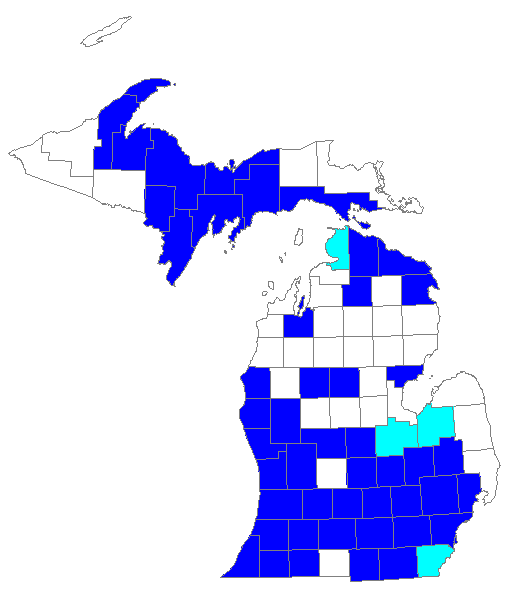 |
 

 |



Baltimore (Euphydryas phaeton [Drury])
Wing span: 1 3/4 - 2 3/4 inches (4.5 - 7 cm).
Identification: Geographically variable. Upperside is black with red-orange crescents on outer margins of both wings and rows of creamy white spots inward.
Life history: Males perch near the ground to find females. Eggs are laid in groups of 100-700 under host plant leaves. Newly-hatched caterpillars move to the tip of the plant and feed together in a web which is enlarged downward as the caterpillars consume more of the plant. These caterpillars suffer high mortality from falling off the plant and from parasitism by wasps. Fourth-stage caterpillars hibernate in rolled leaves on the ground.
Flight: One brood; from May-June in the south, June-August in the north.
Caterpillar hosts: Plants where eggs are laid and that caterpillars eat before hibernating are turtlehead (Chelone glabra), hairy beardtongue (Penstemon hirsutus), English plantain (Plantago lanceolata), and false foxglove (Aureolaria). After overwintering, caterpillars may continue to use these plants, but may also wander and feed on unrelated plants including arrowwood (Viburnum recognitum), common lousewort (Pedicularis canadensis), Japanese honeysuckle (Lonicera japonica), and white ash (Fraxinus americana).
Adult food: Nectar from flowers of milkweed, viburnum, and wild rose.
Habitat: Wet meadows, bogs, and marshes in the northeast part of the range; dry open or wooded hillsides in the southwest.
Range: Very local. Nova Scotia west across the Great Lakes region to southeast Manitoba; south through the eastern United States to northern Georgia, northern Mississippi, and northeast Oklahoma. Isolated records in northeast Texas and Nebraska.
Conservation: Some regional populations may be declining.
The Nature Conservancy Global Rank: G4 - Apparently secure globally, though it might be quite rare in parts of its range, especially at the periphery.
Management needs: None reported.
References:
Opler, P. A. and G. O. Krizek. 1984. Butterflies east of the Great Plains. Johns
Hopkins University Press, Baltimore. 294 pages, 54 color plates.
Opler, P. A. and V. Malikul. 1992. A field guide to eastern butterflies. Peterson
field guide #4. Houghton-Mifflin Co., Boston. 396 pages, 48 color plates.
Scott, J. A. 1986. The butterflies of North America. Stanford University Press,
Stanford, Calif. 583 pages, 64 color plates.
Author: Jane M. Struttmann
State and Regional References:
Layberry, R.A., Hall, P.W. & Lafontaine, D.J., 1998. The Butterflies of
Canada. University of Toronto Press, Toronto, ON. 280 pp.
Nielsen, Mogens C., 1999. Michigan Butterflies and Skippers: A Field Guide
and Reference. Michigan State University Extension, East Lansing, MI.
248 pp.
Opler, P.A. 1998. A field guide to eastern butterflies, revised format.
Houghton Mifflin Co., Boston.

